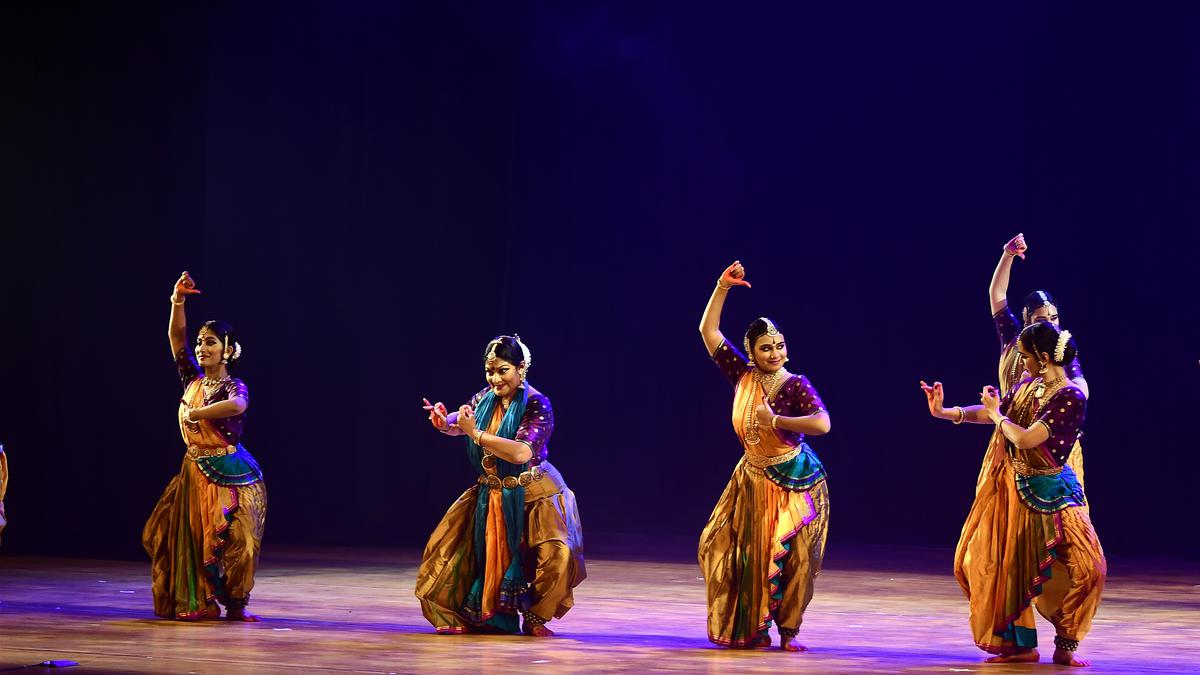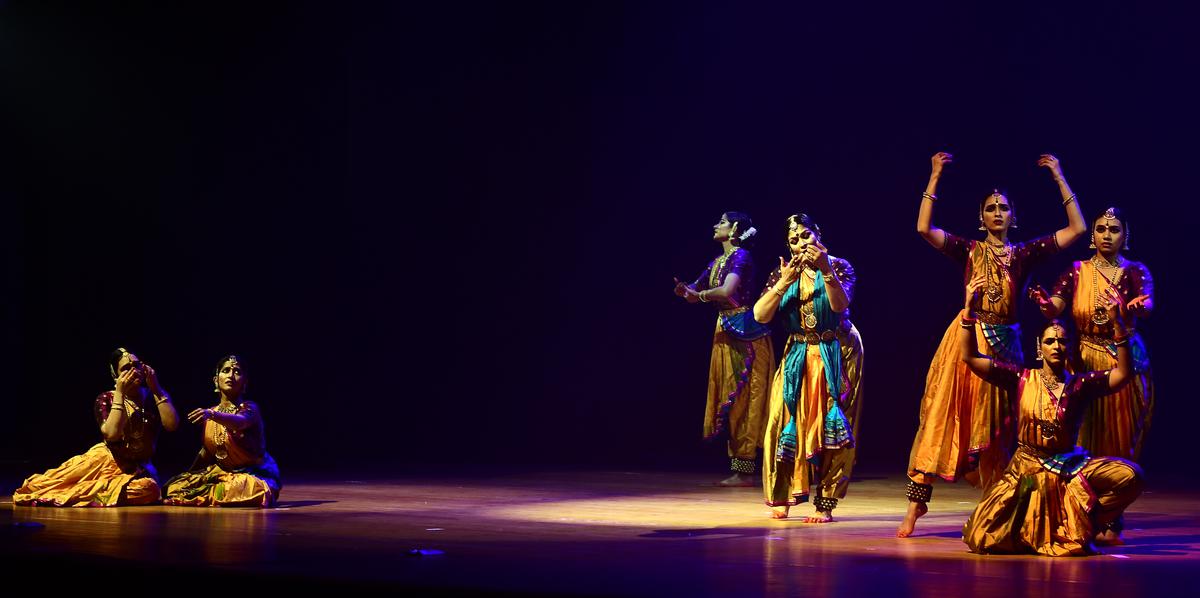- February 15, 2024
Geeta Chandran’s ‘Samagati’ introduced the philosophical idea of purushartha

Geetha Chandran and students of her Natya Vriksha Dance Company present their thematic production ‘Samagati’ at the Music Academy’s December dance festival held on January 8, 2024.
| Photo Credit: PICHUMANI K
Dancers are constantly looking at new concepts and themes that could appeal to a larger audience base for their solo and group presentations.
Geeta Chandran and her Natya Vriksha dance company’s ‘Samagati’ ( broadly defined as a union), at the Music Academy, introduced the philosophical idea of purushartha.
Interspersing the idea of coming together in a harmonious manner, Geetha’s recital was divided into four segments — Dharma, Artha, Kama and Moksha.
Geeta had conceived the concept of Dharma, an intensely personal state of belief, as a salutation to her Ishtha Devata — Nataraja, the lord of dance, through an original composition ‘Shankara Jatadhara’ written by Pootanery Subramaniam and composed by O.S.Arun. The attributes of Shiva and the five elements were explored.

Geetha Chandran presented the Purusharthas as four segments at her thematic performance during the Music Academy’s dance festival, held on January 8, 2024.
| Photo Credit:
PICHUMANI K
Each of the four segments was presented as a group choreography and Geeta explored the permutations and combinations of movements and formations in myriad ways.
Well-synchronised movements
A purvikalyani jathiswaram by the Thanjavur Quartet, chosen for the idea of ‘Artha’ was noteworthy for the rhythmic exploration of adavus, thattimettus and finely-synchronised coordination of the dancers. This highlighted the grandeur and beauty of a jathiswaram.
‘Maaye’, the Shuddha Tarangini raga composition by Muthuswami Dikshitar, is a classic song in the Carnatic repertoire, with ideas embedded in it to throw light on ‘Maya’ that ensnares us in a web of illusion. But, it then goes on to seek the blessings of the goddess to free us from this bondage. The visualisation had a few interesting ideas, including the use of puppet-like movements to show how human beings are mere puppets in the hands of the creator. But, the overall ideation did not reflect the iconic stature and beauty of the kriti.
‘Moksha’ began with a powerful visual of a group of dancers moving towards a spotlight. It moved on to a sequence from Haveli Sangeet, where the thought of Krishna being ‘Adrishya’ for the gopis, and their journey through individual quests for attaining moksha were presented with interesting depictions. However, it soon began to meander.
That said, Samagati was impressive for its professional approach. The lighting design by Gyandev Singh enhanced the dynamism of the dance movements — he used a kaleidoscope of colours to suit the many moods.




